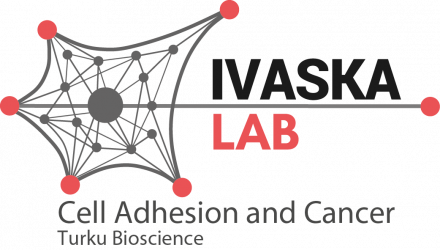Cell adhesion to neighbouring cells and to the underlying extracellular matrix (ECM) is a fundamental requirement for the existence of multicellular organisms. As such, the formation, stability and dissociation of cell adhesions are subject to tight control in space and…
Loss of ADAM9 expression impairs β1 integrin endocytosis, focal adhesion formation and cancer cell migration by Kasper J Mygind et al.
The transmembrane protease ADAM9 is frequently upregulated in human cancers, and it promotes tumour progression in mice. In vitro, ADAM9 regulates cancer cell adhesion and migration by interacting with integrins. However, how ADAM9 modulates integrin functions is not known. We…
Cell-derived matrices for studying cell proliferation and directional migration in a complex 3D microenvironment by Riina Kaukonen et al.
2D surfaces offer simple analysis of cells in culture, yet these often yield different cell morphologies and responses from those observed in vivo. Considerable effort has therefore been expended on the generation of more tissue-like environments for the study of…
Epithelial vimentin plays a functional role in mammary gland development by Emilia Peuhu et al.
In the mammary gland, vimentin intermediate filaments are expressed in stromal cells and in basal epithelial cell populations, including gland-reconstituting mammary stem cells, with largely undefined functions. Here, we have studied how vimentin deficiency affects mouse mammary gland development. We…
FiloQuant reveals increased filopodia density during breast cancer progression by Guillaume Jacquemet et al.
Defective filopodia formation is linked to pathologies such as cancer, wherein actively protruding filopodia, at the invasive front, accompany cancer cell dissemination. Despite wide biological significance, delineating filopodia function in complex systems remains challenging and is particularly hindered by lack…
Tensins: Bridging AMP-Activated Protein Kinase with Integrin Activation by Maria Georgiadou et al.
Integrin activation is essential for cell adhesion and for connecting the extracellular matrix to the actin cytoskeleton. Thus, inappropriate integrin activation has been linked to several diseases, including cancer. Recent insights demonstrate that the main fibrillar adhesion component tensin maintains…
A Strong Contractile Actin Fence and Large Adhesions Direct Human Pluripotent Colony Morphology and Adhesion by Elisa Närvä et al.
Cell-type-specific functions and identity are tightly regulated by interactions between the cell cytoskeleton and the extracellular matrix (ECM). Human pluripotent stem cells (hPSCs) have ultimate differentiation capacity and exceptionally low-strength ECM contact, yet the organization and function of adhesion sites…
AMPK negatively regulates tensin-dependent integrin activity by Maria Georgiadou et al.
Tight regulation of integrin activity is paramount for dynamic cellular functions such as cell matrix adhesion and mechanotransduction. Integrin activation is achieved through intracellular interactions at the integrin cytoplasmic tails and through integrin-ligand binding. In this study, we identify the…
SHANK proteins limit integrin activation by directly interacting with Rap1 and R-Ras by Johanna Lilja et al.
SHANK3, a synaptic scaffold protein and actin regulator, is widely expressed outside of the central nervous system with predominantly unknown function. Solving the structure of the SHANK3 N-terminal region revealed that the SPN domain is an unexpected Ras-association domain with…
